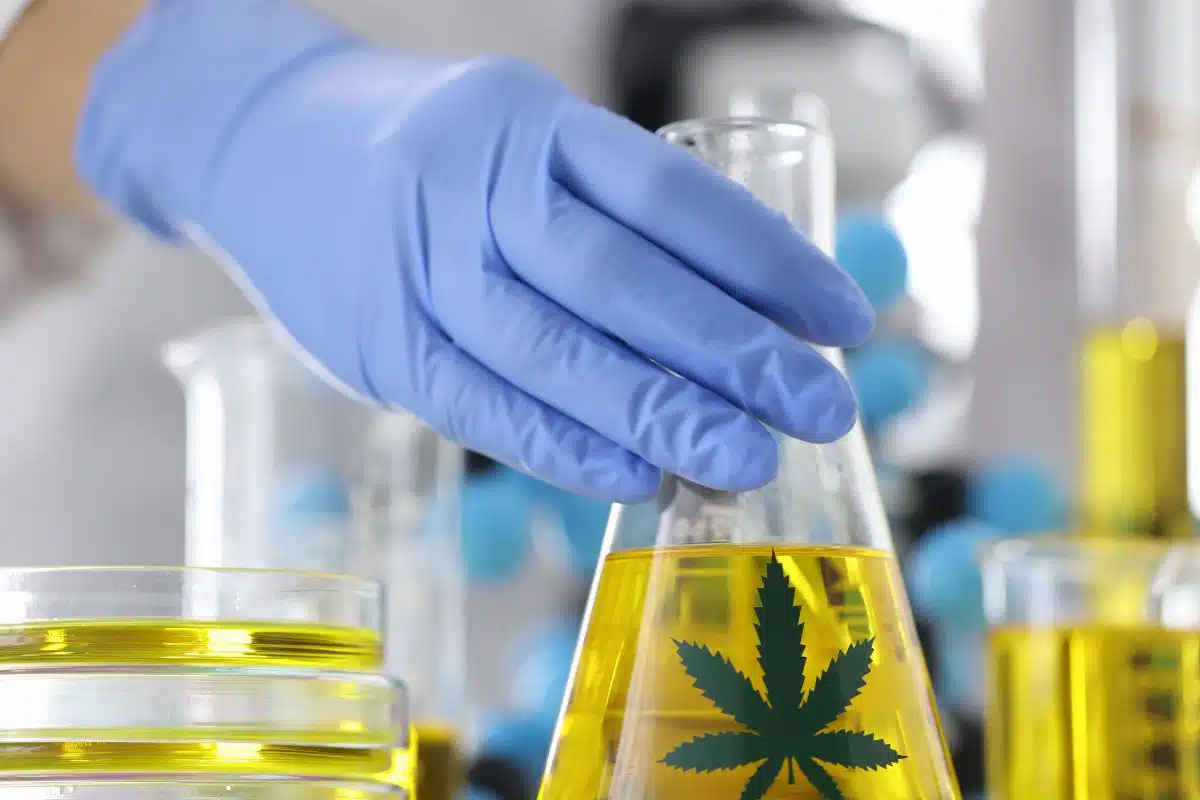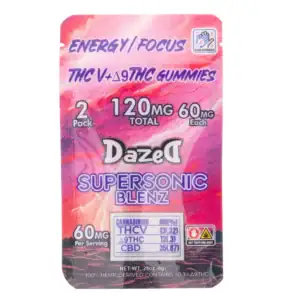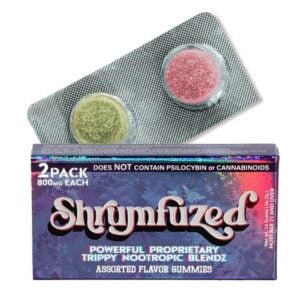What is Considered a High THCa Level in Hair Test: Defining the Threshold
Discovering whether someone’s encountered marijuana isn’t a walk in the park. You gotta turn into Sherlock Holmes, but your clues are in your hair! Forget those basic urine screenings that only skim the surface. This method dives deep, snagging traces of drugs and their little friends that took a joyride through your veins and decided your hair was the perfect hangout spot. Picture a dude named THCa, stealthy and unnoticed. But once he morphs into THC, wham, he becomes the star of the cannabis show. Spotting THCa in a hair sample shouts, “Marijuana was definitely here!” Embark on this journey, and discover the secrets your hair has been hiding. Brace yourself for some revelations that will make you do a double-take!
Table of contents
- Understanding THC and Its Metabolites
- Hair Drug Testing Explained
- Detection of Cannabinoids in Hair
- Interpreting Hair Test Results
- Regulations and Standard Practices
- Technical Aspects of THC Analysis
- Issues and Controversies in Hair Testing
- Comparative Analysis of Drug Testing Methods
- Factors Affecting Hair Test Accuracy
Understanding what is considered a high level of THCa in hair tests is crucial for interpreting the results correctly. Hair tests generally look for both parent drugs and their metabolites to differentiate between drug ingestion and external contamination. In hair analysis, the presence of THC, its metabolites, and THCa helps confirm the use of cannabis. While specific cut-off levels can vary by testing facility, the presence of these compounds above the established threshold typically indicates cannabis consumption.
Understanding THC and Its Metabolites

To interpret high THCa levels in hair tests correctly, you need to understand THC pharmacokinetics, the nature of marijuana’s active compounds, and how metabolites function in drug metabolism.
THC Pharmacokinetics
Tetrahydrocannabinol (THC), the primary psychoactive component of Cannabis sativa, undergoes a specific process in your body. Once ingested, THC’s bioavailability varies based on the mode of consumption. Being lipophilic, THC readily enters the bloodstream and distributes into fatty tissues. Over time, THC is metabolized in the liver to a psychoactive compound but eventually to a non-psychoactive metabolite, carboxy-THC (THC-COOH), which is used as a marker in drug tests.
Marijuana and its Active Compounds
Marijuana contains various cannabinoids, chemical compounds that interact with your body’s cannabinoid receptors. THC and cannabidiol (CBD) are the most recognized of these compounds. The psychoactive effects you experience are primarily due to THC, whereas CBD is non-psychoactive and can modulate the effects of THC.
Metabolites and Drug Metabolism
Metabolites are the byproducts of drug metabolites like THC once the body processes them. These metabolites can indicate recent drug use. Since hair grows slowly, the presence of metabolites like THCa, a direct precursor to THC, in your hair may imply consumption over an extended period. The analysis of these substances through hair tests provides insights into your pharmacodynamics — the interactions between the body and the drug over time.
Hair Drug Testing Explained
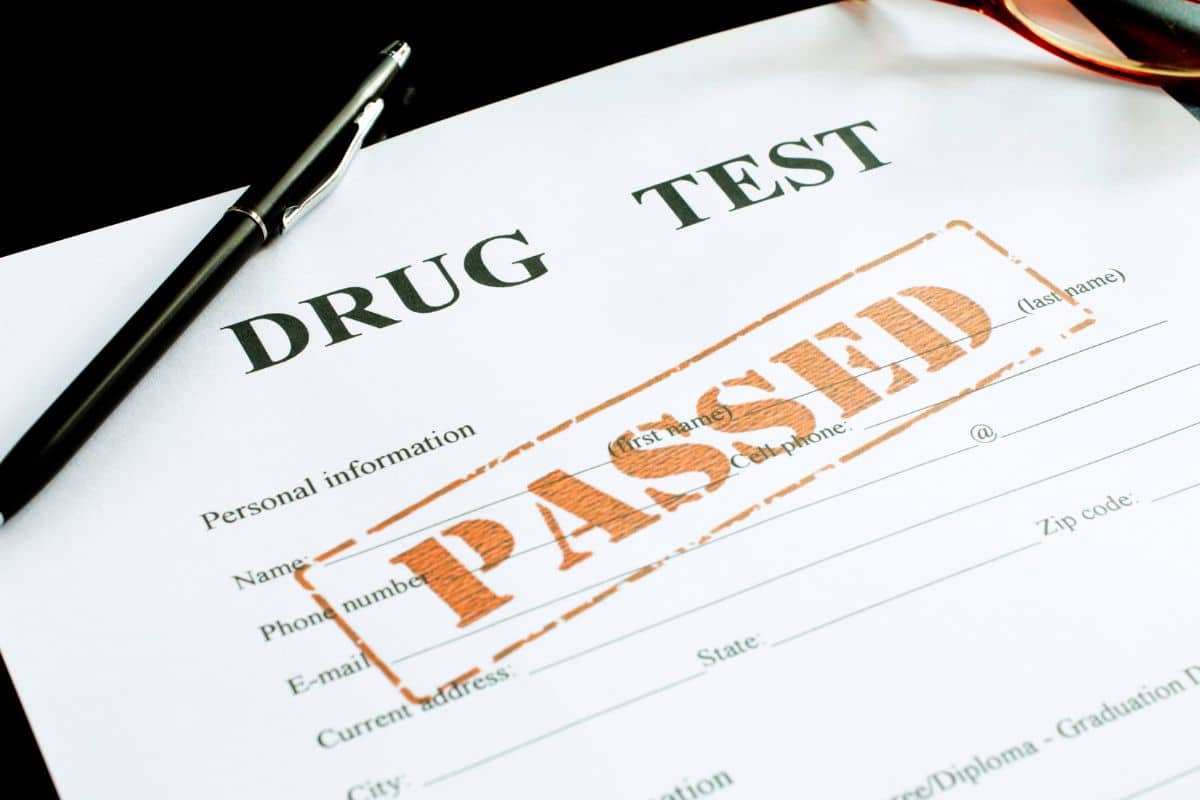
Hair drug testing is a reliable form of laboratory testing that can detect drug use over a longer period compared to urine and blood tests. Your hair sample undergoes detailed analysis to trace drug metabolites encapsulated in the core of the hair follicle.
How Hair Follicle Drug Tests Work
When you take drugs, they enter your bloodstream and eventually become embedded in your hair follicles. A hair follicle drug test typically involves taking a small hair sample, close to the scalp—usually about 1.5 inches of hair, representing approximately 3 months of growth. The hair is first screened using an immunoassay like ELISA (Enzyme-Linked Immunosorbent Assay) for potential drug presence. If the initial screening is positive, confirmation testing using more specific methods like gas chromatography (GC) or GC-MS (gas chromatography-mass spectrometry) is conducted to verify the results.
The Role of Melanin in Hair Analysis
Melanin is the pigment in your hair that may affect the absorption of drugs into your hair fibers. This is significant because the presence of melanin can influence the concentration of drug metabolites detected in a hair sample. During hair analysis, laboratories account for melanin levels to ensure the accuracy of the test results.
Advantages of Hair Testing Over Other Methods
Hair testing has several advantages over urine or blood tests. It has a longer detection window, preserving evidence of drug use for months. Hair tests are harder to adulterate since the hair sample is collected under direct supervision. The cost of hair follicle drug testing can be higher than other methods, but the benefits of long-term detection and accuracy often outweigh the expense. Additionally, hair testing is considered non-invasive, and the samples are easier to store and handle during laboratory testing.
Detection of Cannabinoids in Hair
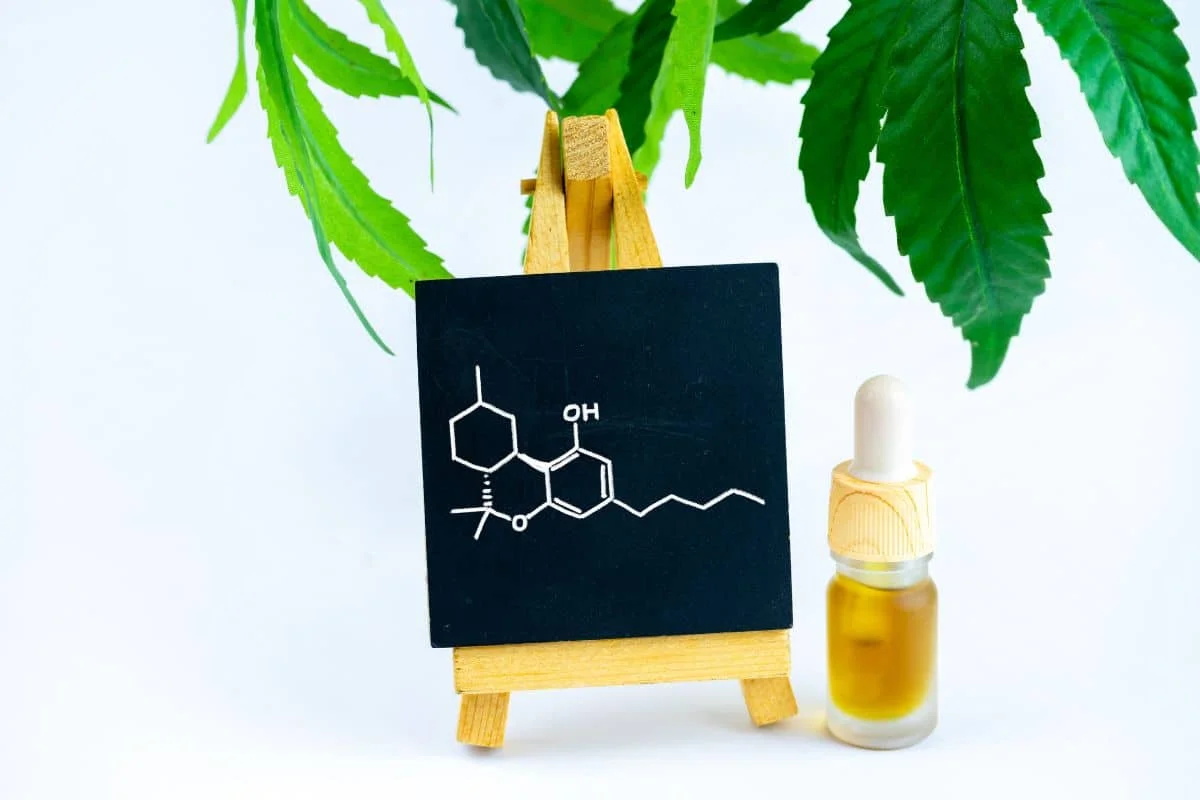
When you undergo hair follicle drug testing, the presence and levels of cannabinoids such as THC are determined through analytical methods. These precise measurements can indicate whether there has been cannabis use.
THC and Hair Follicle Drug Testing
Hair follicle drug tests target metabolites—byproducts of your body processing THC. These tests are sensitive to THC-COOH, a secondary metabolite indicating THC exposure. Unlike urine tests, hair tests assess long-term cannabis use, providing a detection window of up to 90 days due to slow hair growth. Chronic exposure to cannabis smoke can lead to detectable levels of THC in hair strands.
Understanding Cut-off Levels and Reference Range
To interpret drug test results, laboratories establish cut-off levels. These determine the threshold for a positive result—a high THCa level compared to the reference range suggests cannabis use. The cut-off levels ensure consistent and reliable screening for THC across tests. They are pivotal in differentiating between passive exposure to cannabis smoke and actual use.
Factors Influencing Detection in Hair Follicle Testing
Several factors influence THC detection in hair. The sensitivity of the hair follicle drug tests varies, with the window of detection being a key factor. Personal hair growth rate, the amount of cannabis consumed, and the frequency of use can all affect the concentration of THC metabolites. Importantly, external contamination from cannabis smoke could lead to a false positive, which is why confirming presence of THC metabolites rather than the parent drug is crucial.
Interpreting Hair Test Results

When analyzing hair test results for Δ9-tetrahydrocannabinolic acid (THCa), it’s crucial to understand the distinction between levels indicating use and contamination. Hair offers a longer window of detection for substances such as cannabis, which can be a double-edged sword in terms of interpreting outcomes.
Positive vs. Negative Results
A positive result in a hair test for THCa typically indicates that you have used cannabis. Hair analysis looks for the main metabolite, THCa, which is incorporated into hair strands as it grows. However, levels considered “high” can vary. In contrast, a negative result suggests that you have not consumed cannabis, with no detectable levels of THCa in your hair. It’s essential to be aware that different laboratories may have varying thresholds for what constitutes a positive or high level of THCa.
The Implications of False Positives and Negatives
False positives can occur due to environmental contamination or the use of certain hemp-based products, leading to inaccurate assumptions about drug use. Conversely, false negatives may happen if the drug use occurred below the detectable limit or if the hair sample was mishandled. Both types of erroneous results can have substantial impacts on your life, especially in scenarios involving health insurance, child custody, or workplace allegations of drug use.
Legal and Workplace Considerations
In legal and workplace contexts, high levels of THCa found during hair tests can have serious consequences. Employers often utilize tests from recognized labs like Quest Diagnostics for workplace drug testing. A positive drug test may affect your employment status or lead to disciplinary action. In legal cases, such as child custody, hair test results are often part of the evidence evaluated. It’s important to note that while urine testing is commonly used in drug panels, hair tests provide a more extended detection period for past cannabis use.
Regulations and Standard Practices

Regulations surrounding drug testing, particularly hair testing for THCa levels, are meticulously crafted across various domains such as child protection, the workplace, and criminal investigations. Given the gravity and potential consequences of positive drug tests, adhering to standard practices and regulatory guidelines is imperative.
Drug Testing in Child Protection Cases
In child protection cases, your state or local agencies have specific guidelines to gauge cannabis use. Hair testing is a method often utilized due to its longer detection period. A high THCa level might trigger a more in-depth investigation, possibly coupled with a confirmation test, to ensure the safety of the child involved.
Workplace Drug Testing Policy
Your workplace drug policy is informed by health insurance mandates and state laws, which may include screening for various drug classes including cannabis. Hair tests can be part of a broader drug panel required for employment. Failed tests, such as those showing high THCa levels, usually demand a confirmation urine test because urine testing is the approved method for federal workplace drug testing programs.
Criminal Investigations and Drug Testing Protocols
During criminal investigations, high levels of THCa found in hair samples can be a critical piece of evidence. As someone potentially involved in a legal case, it is essential for you to know that these tests follow strict drug testing protocols that must stand up to forensic scrutiny. Each stage—from sample collection to analysis—is regulated to prevent contamination and to ensure accurate, reliable results.
Tables summarizing thresholds for high THCa levels in hair tests and the implications for child protection cases, workplace policy, and criminal investigations would clarify these regulations, but precise values often vary based on the governing body and specific circumstances. Always consult your local regulations or legal counsel for the most accurate and relevant information.
Technical Aspects of THC Analysis

As you explore the technical aspects of THC analysis, it’s crucial to understand the methodologies applied in hair testing, and the need for high sensitivity and specificity during detection. These components determine the reliability of the results when examining the presence of THC or its metabolites in hair samples.
Analytical Techniques in Hair Testing
Several analytical techniques are employed to test for THC in hair, among which gas chromatography (GC) coupled with mass spectrometry (GC-MS) is a prominent method. This combination provides a powerful approach capable of detecting minute amounts of THC and its metabolites in hair samples. GC-MS has been widely recognized for its ability to provide confirmation testing after an initial screening, thus ensuring the accuracy of results.
Another common screening tool is the enzyme-linked immunosorbent assay (ELISA), also known as ELISA test or immunoassay. These tests are designed for the rapid screening of samples, providing a cost-effective option for identifying the presence of drug metabolites like carboxy-tetrahydrocannabinol (carboxy-THC), which is a telltale metabolite of cannabis consumption.
Sensitivity and Specificity of THC Detection
The sensitivity of a test refers to its ability to correctly identify those with THC present in their hair samples. A highly sensitive test minimizes the number of false negatives. Conversely, specificity is the capability of the test to exclude those without THC present, reducing the chance of false positives. Top-tier analytical methods, like GC-MS, exhibit high sensitivity and specificity, which is vital for the accurate detection of THC and ensures that hair testing accurately reflects exposure to cannabis without being influenced by external contamination.
Issues and Controversies in Hair Testing
Understanding the complexities of hair testing for cannabis, especially THCa levels, involves unpacking the challenges associated with passive exposure, the potential for external contamination, and concerns about racial bias. Each factor contributes to the debate on the reliability and fairness of hair drug tests.
Passive Exposure to Cannabis Smoke
If you’re in an environment where cannabis smoke is present, passive exposure might lead to detectable levels of THCa in your hair sample. Contrary to what you might believe, simply being around marijuana smoke can result in a positive drug test, even if you haven’t used the drug yourself. The sensitivity of hair tests to THCa presence raises questions about the line between actual drug use and mere exposure.
External Contamination and Drug Testing
External contamination refers to the presence of cannabinoids in your hair due to contact with environments or substances with THCa, rather than direct consumption. This includes scenarios such as touching cannabis or being exposed to surfaces where it was handled. Hair tests do not always distinguish the source of these substances accurately, potentially leading to false-positive results and raising concerns about the specificity of these tests.
Racial Bias in Hair Drug Testing
There is evidence to suggest that the darker, coarser hair typical of certain ethnic groups may be more likely to absorb both THCa and other environmental pollutants, leading to a higher potential for false positives in drug tests. Such findings point to a potential racial bias in hair testing, challenging the implicit assumption that these tests are equally fair and accurate across different populations.
Remember to consider these factors critically if you are interpreting hair drug test results, and do not hastily conclude that a high THCa level is necessarily indicative of direct drug use.
Comparative Analysis of Drug Testing Methods
When attempting to understand the levels of psychoactive substances in the human body, different drug tests are employed, each with unique characteristics in terms of detection window and substance identification.
Hair vs. Urine Drug Testing
Hair follicle drug tests capture drug metabolites that have entered the hair shaft from the blood capillaries, providing a detection window of up to 90 days. Hair testing reveals a historical record of drug use, including but not limited to cannabis, cocaine, opiates, methamphetamine, and PCP. In contrast, a urine drug test will typically have a detection window of a few days to a week, capturing recent drug use. Urine tests are the most common form of drug screening due to their ease and quick turnaround for results.
Psychoactive Substances Detected:
- Hair Test: Cannabis, Cocaine, Opiates, Methamphetamine, PCP
- Urine Test: Marijuana, Cocaine, Heroin, Amphetamines
Detection Window:
- Hair Test: Up to 90 days
- Urine Test: A couple of days to a week
Hair vs. Blood Testing
Blood tests can detect the active presence of substances like marijuana, cocaine, and methamphetamine directly circulating in your bloodstream. These tests are considered to be an accurate measure of current impairment, as they identify the actual presence of the psychoactive substance. Hair tests, conversely, are not designed to detect current impairment but can tell whether you’ve used drugs in the past few months.
Psychoactive Substances Detected:
- Blood Test: THC, Cocaine, Methamphetamine, Amphetamines
- Hair Test: THC metabolites, Cocaine Metabolites, Opiate Metabolites
Detection Window:
- Blood Test: Hours to a couple of days
- Hair Test: Up to 90 days
Psychoactive Substances Detection Comparison
Your choice of drug testing method may depend on the substances of interest. While saliva tests and breath tests can detect substances like alcohol within hours of use, hair tests can test for a broader range of psychoactive substances such as marijuana’s THC-COOH metabolites or heroin’s further metabolites. It’s important to note that typical hair tests might not reliably detect drugs like cannabidiol (CBD) or dronabinol, as these do not always produce standard metabolites traced by common hair tests.
Substances Detected:
- Saliva/Breath Tests: Alcohol (Breath), Marijuana (Saliva)
- Hair Test: THC-COOH, Cocaine Metabolites, Heroin Metabolites
Hair tests are particularly sensitive to repeated exposure of a substance due to their extended detection window, whereas urine and saliva tests provide insights into recent drug use. Each testing method comes with its own scope and limitations, presenting different advantages based on the testing context.
Factors Affecting Hair Test Accuracy
When determining THC levels via hair testing, various factors can impact the accuracy of your results. It’s crucial to consider these aspects to understand the reliability of the tests.
Influence of Hair Color on Testing Results
Research suggests that your hair color can affect the absorption of THC into your hair fibers. Darker hair has a higher melanin content, which can bind with drug compounds more easily, potentially leading to higher levels of THCa detected during tests.
Hair Growth Rates and Drug Detection
The rate at which your hair grows can influence the detection window of drug use. Typically, hair grows at a rate of about 0.5 inches per month. Thus, THC metabolites such as THCa can be detectable for several months, depending on how quickly your hair grows.
Body Hair vs. Head Hair Analysis
There’s a difference in testing head hair versus body hair. Head hair is generally preferred for analysis as it provides a more consistent growth rate for determining drug use over time. In contrast, body hair growth rates can vary significantly, which might affect the interpretation of drug test results for substances like THCa.
For a more in-depth understanding of how these factors can influence hair tests for cannabis use, examine the findings on hair sample analysis and the effectiveness of different testing methods.
Frequently Asked Questions
When considering hair follicle drug tests, one commonly tested substance is Tetrahydrocannabinolic acid (THCa), which is a precursor of THC, the primary psychoactive component of cannabis. Understanding how THCa is measured and the implications it can have on drug testing outcomes is crucial for both test subjects and administrators.
What does a hair follicle drug test detect?
A hair follicle drug test typically screens for the presence of drugs and their metabolites within your hair shaft. Substances like THC are incorporated into your hair from your bloodstream, and they can provide a history of your drug use over a longer period compared to blood or urine tests.
How is THC metabolite concentration quantified in hair follicle tests?
THC metabolite concentration in hair tests is measured by examining the hair shaft’s core, where metabolites become trapped. Laboratories use precise analytical techniques such as mass spectrometry to quantify trace amounts of THC and other substances within the hair’s structure.
What are the typical cutoff levels for THC in hair drug testing?
THC cutoff levels in hair drug tests can vary, but common thresholds are set at 1 picogram per milligram (pg/mg) of hair. Levels above the cutoff point are considered positive, indicating THC use within the detection window of the hair tested.
How can environmental contamination affect hair drug test results?
Environmental contamination can occur when hair is exposed to THC through contact with smoke or cannabis touching the hair. Procedures are available for decontamination to differentiate between external contamination and actual drug use, reducing the risk of false positives.
What can cause false positives in hair follicle drug testing?
False positives in hair tests can result from a variety of factors, including secondhand exposure to drugs, the use of certain hemp products, or even cross-reactivity with other chemicals. Such instances highlight the necessity of confirmatory testing and thorough analysis.
How do legal thresholds for THC in hair tests vary by jurisdiction?
Legal thresholds for THC in hair tests vary by jurisdiction, with different places setting varying cutoff levels that determine whether a result is positive or not. These limits can influence employment, legal cases, and other scenarios where drug testing is utilized.

